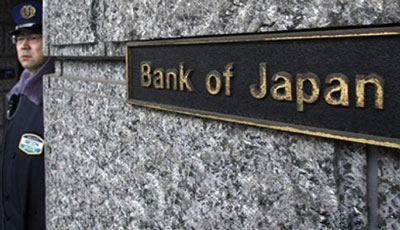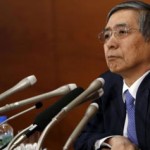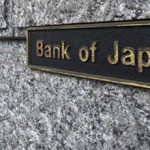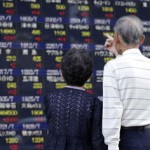BOJ holds rates despite overseas headwinds, stagnant inflation

The Bank of Japan held off on expanding its massive stimulus program on Friday, preferring to preserve its dwindling policy options in the hope that the economy can overcome the drag from China’s slowdown without additional monetary support.
But the central bank is likely to remain under pressure to expand its already massive asset-buying program as slumping energy costs, weak exports, and a fragile recovery in household spending keep inflation well short of its 2 percent target.
Core consumer prices fell 0.1 percent in the year to September, a second monthly drop, while household spending slid even as job availability hit a two-decade high.
“The effect of the yen’s weakness (on import prices) is expected to taper off and consumer prices will probably weaken further from around the year-end,” said Yuichi Kodama, chief economist at Meiji Yasuda Life Insurance.
“We forecast the BOJ will adopt more easing next January.”
The BOJ maintained its pledge to increase base money, or cash and deposits at the central bank, at an annual pace of 80 trillion yen ($662 billion) through aggressive asset purchases.
The dollar slid against the yen and the Nikkei share average lost ground after the decision, but the moves were short-lived.
“This is what I would call decisive inaction on the part of the BOJ,” said Stefan Worrall, cash equities manager at Credit Suisse in Tokyo.
“They played this very much by the book, not leaving any room for confusion by waiting until after the market opened for its afternoon session.”
Markets will now focus on the BOJ’s twice-yearly outlook report and Governor Haruhiko Kuroda’s news conference later on Friday for clues to the timing of any future monetary easing.
With the economy skirting recession, the BOJ is likely to cut its economic growth and inflation forecasts for the fiscal year that began in April.
But it will only slightly alter its forecast that inflation will hit 1.9 percent next fiscal year, sources have told Reuters, allowing it to argue that Japan is on track to hit its 2 percent target.
GLIMMER OF HOPE
Japan’s economy contracted in April-June and may shrink again in July-September on weak exports. Many analysts say any rebound in the current quarter will be too weak for the BOJ to achieve its 2 percent inflation target next year.
Economists were split on whether the BOJ will pull the policy-easing trigger on Friday, although market bets leaned toward no action after a recent run of positive data.
Some BOJ policymakers have worried that sluggish demand in emerging Asian markets could hurt both output and corporate confidence badly enough to delay planned capital investment and wage hikes.
Those concerns eased somewhat after data on Thursday showed factory production rose 1.0 percent in September.
BOJ officials have said economic conditions are much better now than last October, when it surprised markets by easing policy after spending took a direct hit from a sales tax hike, and companies were in no mood to raise wages.
But wage growth remains subdued and households are reluctant to spend due to the rising cost of living from a weak yen, which drives up import prices.
The BOJ considers “shunto” wage hike negotiations between business and labor unions, which kick off from year-end, as key to whether inflation will accelerate sustainably.
“I expect the BOJ to be on hold for the rest of the year,” said Koya Miyamae, senior economist at SMBC Nikko Securities.
“If it was to take action this year, that would be to support wage hikes at ‘shunto’ and the best time to do so should have been this month.”
($1 = 120.8700 yen)
Source: Reuters – BOJ holds rates despite overseas headwinds, stagnant inflation





























